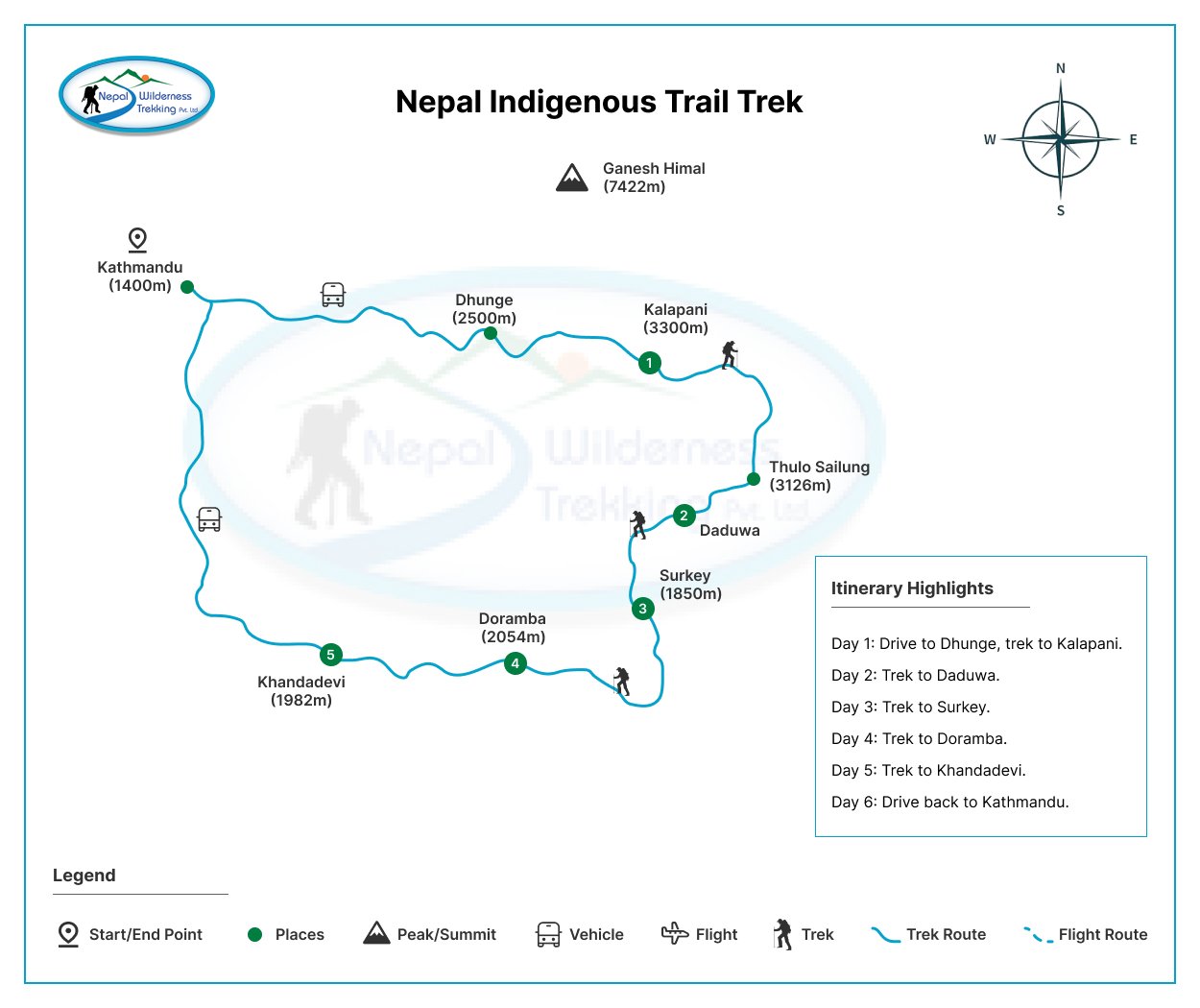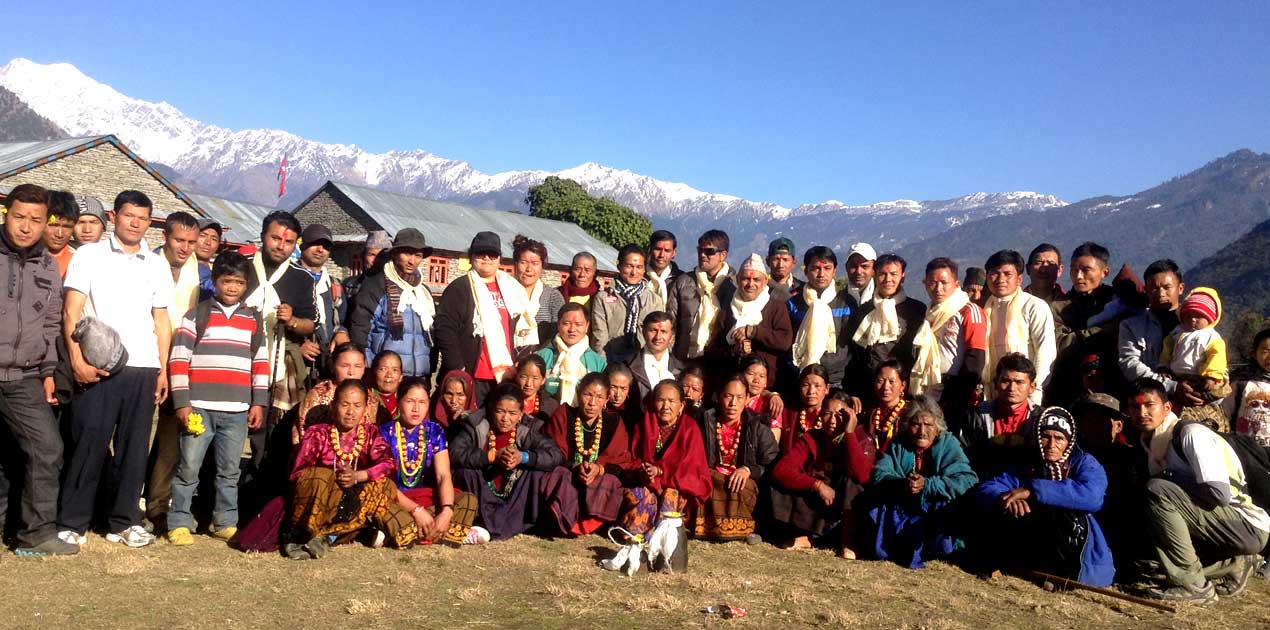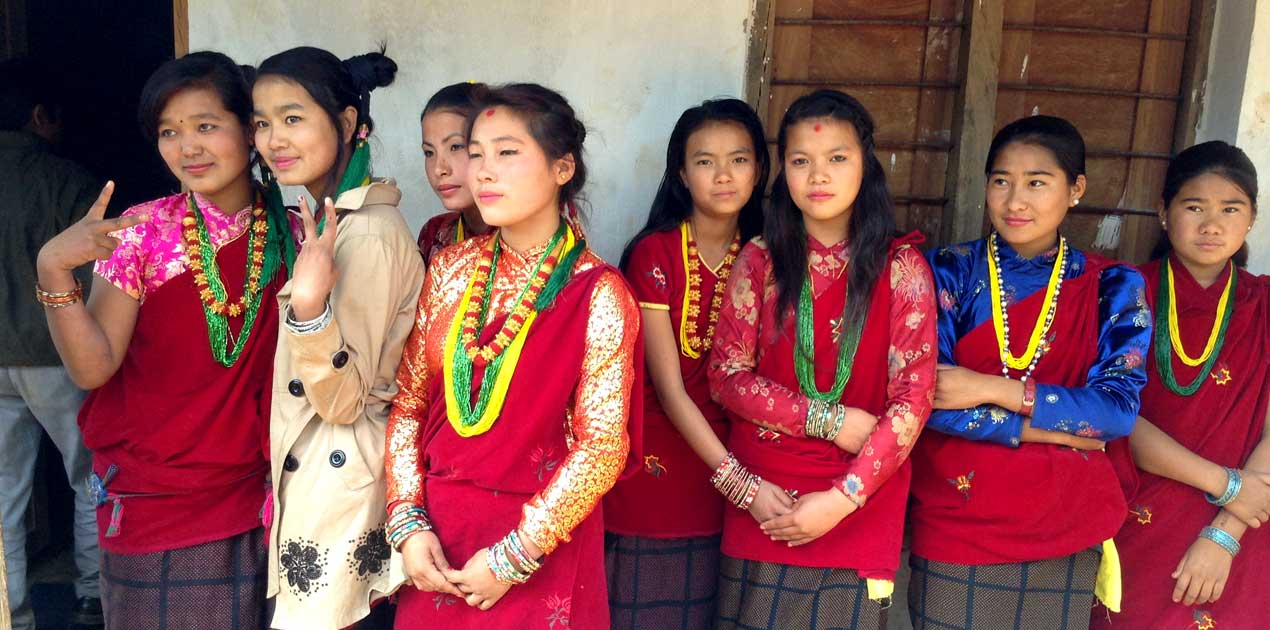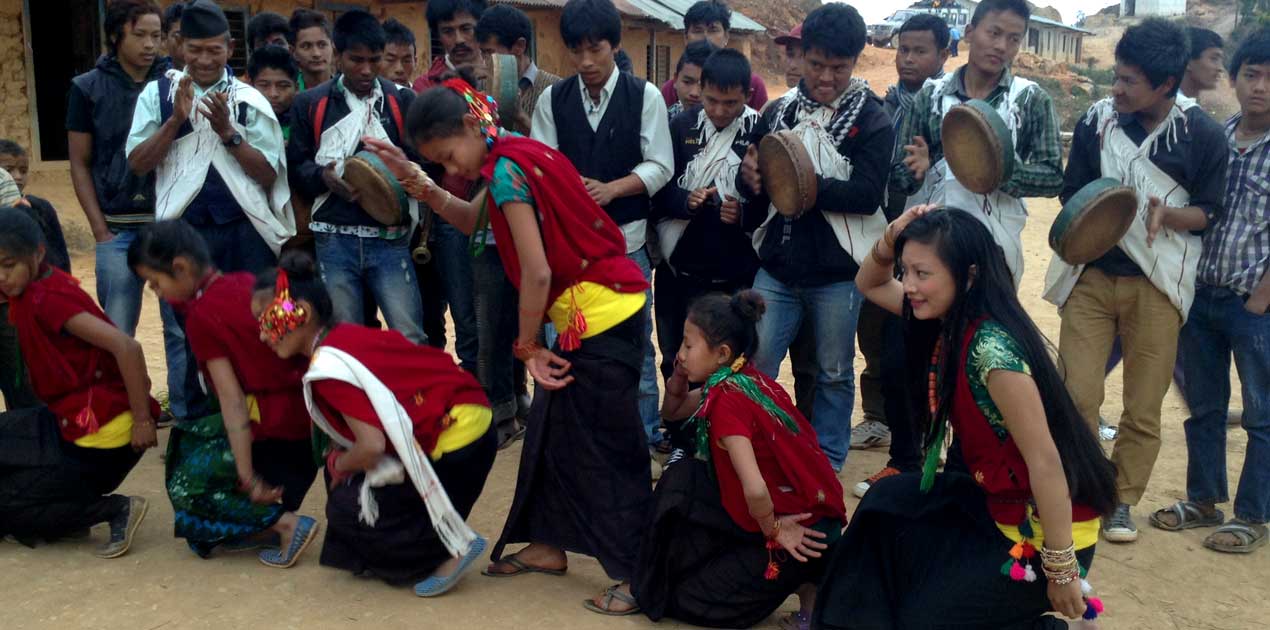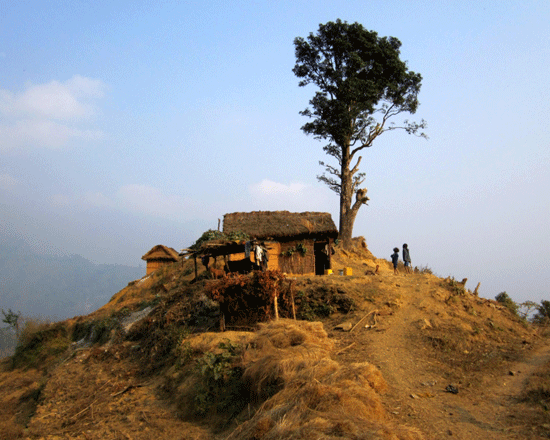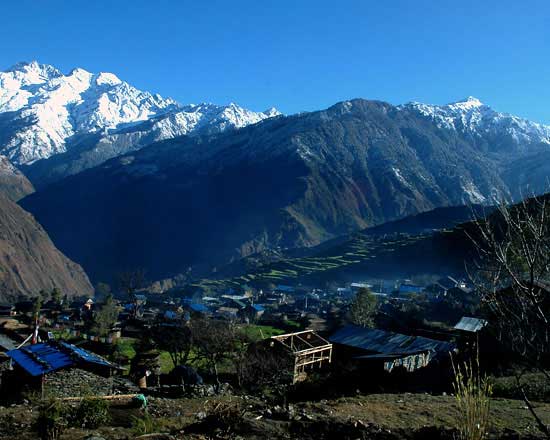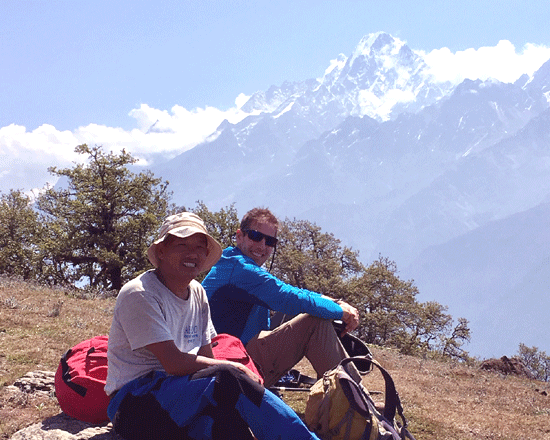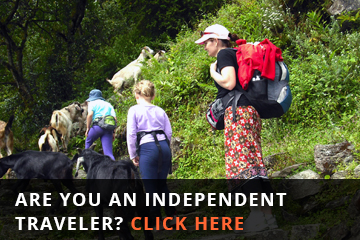Indigenous Peoples Trail Trek
Indigenous Peoples Trail Trek
Homestay TrekTrip Facts
These treks are suitable for any walker looking for something a little more challenging and energetic. They are a combination of some longer and shorter walks and hill-walking experience is desirable. The duration is usually from 10 to 15 days. Following the up and down terrain of Nepal and walking to higher elevations contrasts these treks to those in the easy classification. However, you will be rewarded for your efforts with spectacular close-up views of glaciers and of the high Himalayas. Although the terrain is not difficult, some vigorous hiking experience is useful. There may be up to 6 hours a day on the trail and the elevation rises and falls from 800m/ 2624ft to 4000m/13210ft above sea level.
100%
Overview
Nepal Indigenous Peoples Trail Trek multi Cultures
The Indigenous Peoples Trail trek allows you to immerse yourself in the vibrant culture of Nepal (Adivasi Janajati Trek) as you traverse through remote villages. This trek showcases Indigenous multiculturalism in a hidden part of Nepal, providing a glimpse into the authentic and typical village life.
Meandering through the picturesque mid-hills of Nepal, the Indigenous Peoples Trek offers a route at lower elevations than some of the more famous treks. Its accessibility makes it an excellent option even in the winter season. This trek follows a trail indigenous to the lowland elevations, staying below 3,126 meters. Situated in the hilly eastern part of the country, the route encompasses the Thulo Sailung Peak to the North, the Sun Koshi to the South, and the Tama Koshi River flowing alongside the hills.
Indigenous castes
We have designed the Indigenous Peoples Trail Trek as a unique itinerary that provides an exceptional combination of cultural, linguistic, and Nepalese ethnic groups. This makes the trek a truly unique experience. Also, the tour offers an incomparable and natural blend of these diverse ethnic groups: the Bhutia, Lhopa, Thudam, Larke, Tangbe, Newar, Hyolmo, Jirel, Rai, Limbu, Ghale, Gurung, Magar, Thami, Chhantyal, Yakkha.
There are distinct cultures, languages, and belief systems associated with the Indigenous people. There are many indigenous and minority peoples living in the mountains. In as many as 27 out of the 75 districts, there are indigenous peoples and minorities living there. A majority of the indigenous people in this region live in the remote mountainous areas of rural villages and are reliant on agriculture to survive.
Main religion
The indigenous people along the Nepal trail are predominantly practitioners of the BonPo religion, a form of Buddhism with historical ties to Tibet. They hold a deep reverence for nature and worship it passionately. Their belief system encompasses a rich pantheon of gods and goddesses. Temples, stupas, and monasteries adorn their villages, reflecting their spiritual devotion.
Furthermore, during the Indigenous trail trek, you were also able to learn more about the Indigenous Peoples of Nepal and the Real Nepalese lifestyle by taking part in this course. This area has a spectacular Himalayan Panoramic view of the entire Himalayan range, from Dhaulagiri and Annapurna to Numburchuili, Gaurishanker, and Kanchenjunga in the east.
In the Indigenous Peoples Trail trek, you will be staying overnight in private homes in traditional villages, far away from any commercialized tourist trails, during the 6-day journey. Moreover, there will be warm hospitality on offer to you, and you will feel as if you are part of the Nepalese family traditions.
Starting the Nepal Indigenous Peoples Trail Trek
The Nepal Indigenous Peoples Trail Trek starts by driving to Dhunge for 6 hours by bus and then trekking to Kalapani on the first day. Next, you will visit Thulo Sailung, which stands at 3,126 meters. Subsequently, you will trek to Daduwa homestay, a beautiful village on the Indigenous Peoples Trail. Additionally, you will encounter the great villages of Indigenous Peoples inhabiting Surkey and Doramba. On the final day, you will overnight at the Khandadevi homestay, visit the Khandadevi temples, and then drive back to Kathmandu.
Furthermore, local houses provide traditional rooms equipped with the comforts expected in tourist-style accommodations. Host families in the Indigenous Peoples Trail Sailung trek region undergo specialized training to ensure the preparation of hygienic meals, catering to the needs of tourists. Therefore, you can expect a comfortable and culturally enriching experience throughout your trek.
Cultural Heritage and Religious Beliefs
The Indigenous Peoples Trail is a journey through Nepal’s rich cultural heritage. Firstly, you’ll visit ancient temples, stupas, and monasteries that are integral to the local belief systems. Moreover, the BonPo religion and Buddhism are prominent in this region, adding depth to the cultural experience. Additionally, the religious structures you encounter are testaments to the spiritual lives of the indigenous communities. Consequently, this trek not only offers a physical adventure but also a profound cultural and spiritual exploration.
Temples and Monasteries
Among the notable religious sites are the Khandadevi temples and monasteries that dot the trail. These sacred places offer insight into the religious practices and architectural styles of the local people. The Khandadevi homestay experience is particularly memorable, providing trekkers with a chance to live with local families and participate in their daily rituals.
The best time for the Nepal Indigenous Trek
- Spring (March to June): This season offers clear skies, blooming flowers, and moderate temperatures, making it an ideal time for trekking. Moreover, the weather is usually stable, and the trails are not too crowded.
- Autumn (September to December): Another excellent time for trekking, with clear skies, mild temperatures, and stunning views of the Himalayas. Additionally, the weather is typically dry and stable, making it perfect for outdoor activities. During these seasons, you can enjoy the natural beauty of the trail and immerse yourself in the culture and traditions of the indigenous peoples of Nepal. However, it’s always a good idea to check the weather forecast and trail conditions before embarking on your trek. In spring, the trail is adorned with blooming flowers, moderate temperatures, and clear skies. Conversely, autumn offers stunning views of the Himalayas, with the landscape bathed in warm, golden hues. Therefore, these seasons provide ideal trekking conditions, enhancing the overall experience with their natural beauty
Highlights
- The Indigenous Peoples Trail trek stands out as a highlighted experience, spotlighting Nepal’s diverse and rich cultural heritage (Adivasi Janajati Trek).
- This trek leads you through remote villages, serving as a prominent example of Indigenous multiculturalism in an off-the-beaten-path region of Nepal.
- The trek offers an immersive and authentic encounter with typical village life.
- It is noteworthy that this Indigenous village trek is the most significant example of Indigenous multiculturalism in a remote part of Nepal.
- The trek allows you to dip into the rich culture of Nepal (Adivasi Janajati Trek) through remote villages.
- It is a place of typical village life.
Note
Our team, Nepal Wilderness Trekking, boasts a team of expert guides, each with a remarkable 20 years of experience leading treks along the Indigenous Peoples Trail. Our dedicated guides and porters possess extensive knowledge of this trekking area, ensuring our clients’ safe and enriching experience. Furthermore, we provide this trek at competitive rates, accompanied by the expertise of our seasoned guides, guaranteeing a memorable and rewarding journey.
what do you learn from them?
There is much to learn from the indigenous peoples of Nepal, as their diverse cultures and traditions offer valuable insights into sustainable living, community, and resilience. Here are some key lessons,
Harmony with Nature:
Many indigenous groups in Nepal live in close connection with the natural environment. Their practices often emphasize sustainability and ecological balance, teaching us the importance of respecting and preserving our natural resources.
Community and Cooperation:
Indigenous communities in Nepal often function on principles of cooperation and mutual support. They emphasize the value of community bonds, shared responsibilities, and collective well-being, which can inspire us to prioritize collaboration and empathy in our own lives.
Cultural Heritage and Identity:
The rich traditions, languages, and art forms of Nepal’s indigenous peoples highlight the importance of preserving cultural heritage. They remind us of the significance of maintaining our own cultural identities and celebrating diversity.
Resilience and Adaptability:
Many indigenous groups have adapted to challenging environments, whether in the high mountains or dense forests. Their resilience in the face of adversity offers lessons in adaptability, resourcefulness, and perseverance.
Oral Traditions and Storytelling:
The oral traditions and storytelling practices of indigenous peoples are powerful tools for preserving history and imparting wisdom. They teach us the value of narratives and how stories can be a means of passing down knowledge and values across generations.
Spiritual Connection:
Indigenous groups often have a deep spiritual connection to their land and environment. This spiritual perspective can inspire us to find deeper meaning and connection in our own lives, encouraging mindfulness and a greater appreciation for the world around us.
Art and Craftsmanship:
The artistry and craftsmanship of indigenous communities, from weaving to sculpture, demonstrate the importance of creativity and the beauty of handmade work. They remind us to value traditional skills and the joy of creating something with our hands.
Detail Itinerary
- Day 01: Drive to Dhunge 6/ hours by bus and trek to Kalapani 2 hour hike, 3300m, stay overnight in the homestay.
- Day 02: visit Thulo Sailung 3126M, and trek to Daduwa- 4-5 hours stay overnight in the homestay.
- Day 03: Trek to Surkey 1850M, 4-5 hours stay overnight in the homestay.
- Day 04: Trek to Doramba (2054M, 4-5 hours stay overnight in the homestay.
- Day 05: Trek to Galba - Khandadevi (1982M, 4-5 hours stay overnight in the homestay.
- Day 06: from Khandadevi drive to - Kathmandu via Dhulikhel (4-5 hours
Cost Included
- Italian, Chinese, Nepali, Indian, and other European foods are available three times a day (breakfast, lunch, and dinner).
- Accommodation in tea houses according to the itinerary.
- Kitbag for storing your belongings.
- Sleeping bag for a comfortable night's sleep on a trek in minus-25 degrees.
- TIMS Entrance Permit.
- Experienced English-speaking, Government licensed holder trekking guide.
- Experienced Sherpa helpers (porters) 1 porter for every 2 pax.
- Guide, and Porter meals, accommodation, salary, and insurance.
- Necessary paperwork, all government, and local taxes.
- A certificate of appreciation from Nepal wilderness trekking after a successful trek.
- Both-way local transportation Kathmandu Trekking starting point and Trekking ending point.
- 3-time meals a day (breakfast, lunch, and dinner chosen by menu).
- Accommodation during the trek.
- Guide and porters, Food, accommodation, salary, insurance equipment, and medicine.
- All the formal charges and 13% Government VAT.
Cost Excluded
- Hotel in Kathmandu
- Personal equipment
- all beverages, Soft and hard table drinks such as coke, beer,
- drinking water/mineral water, etc. during the trek.
- dessert, etc
- Hot shower, laundry
- personal insurance
- Tip for guide and porter.
- Excluded are all costs and expenses not listed under "Cost Includes."
- any costs or delays beyond the control of the management, such as those due to landslides, weather conditions, itinerary modifications for safety reasons, or illness. Changes in government policies, strikes, and similar factors, are not included.
Trip Map
